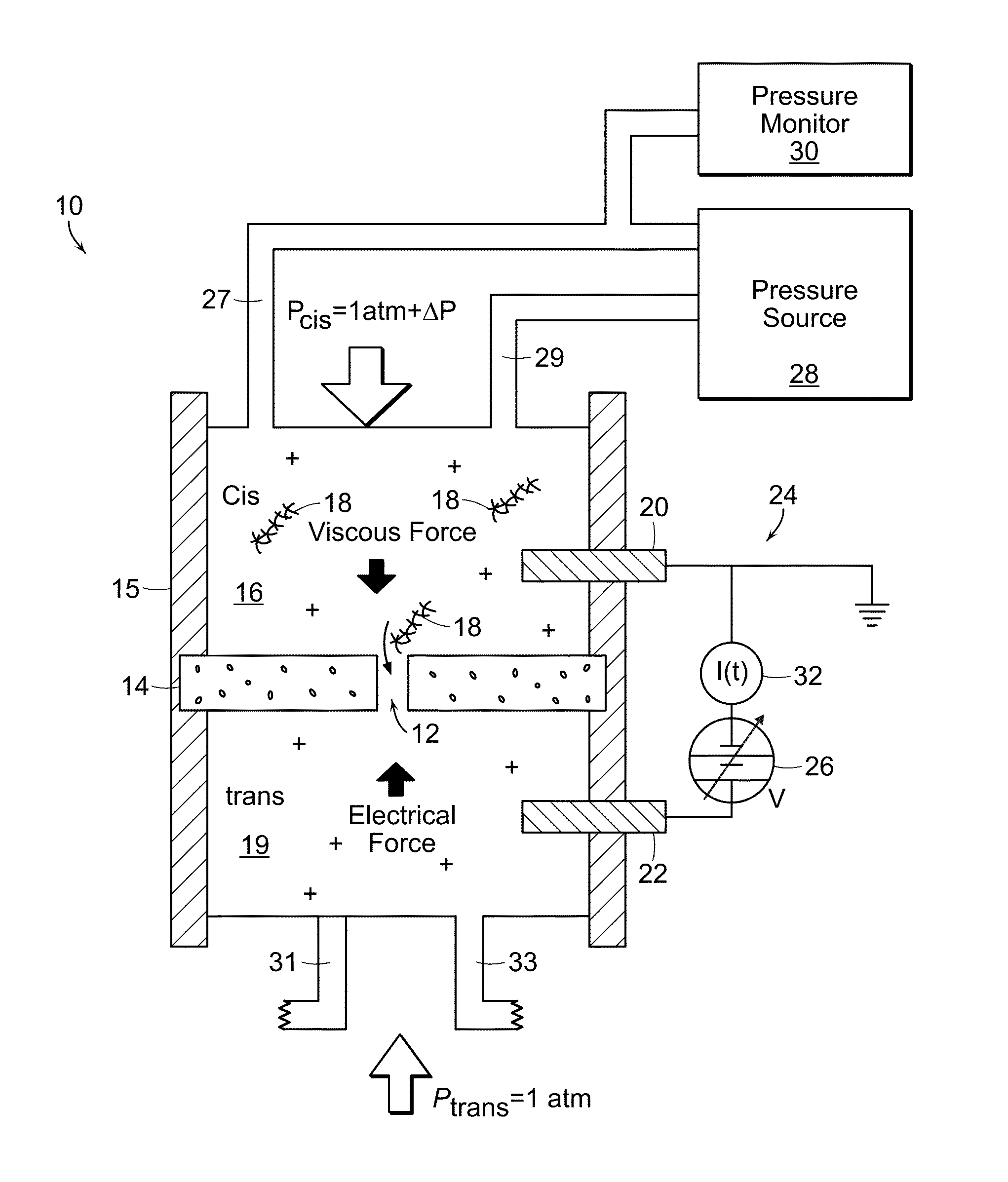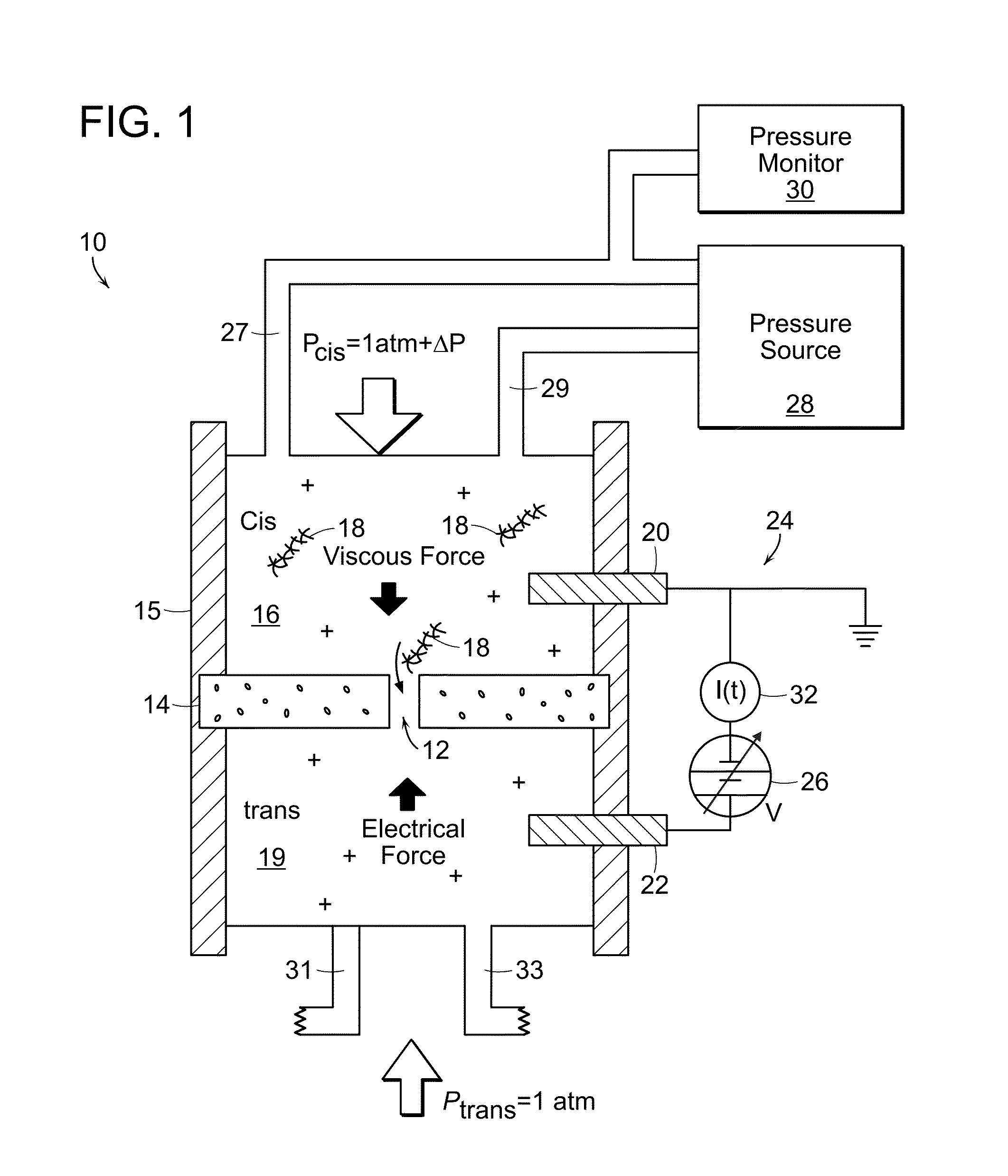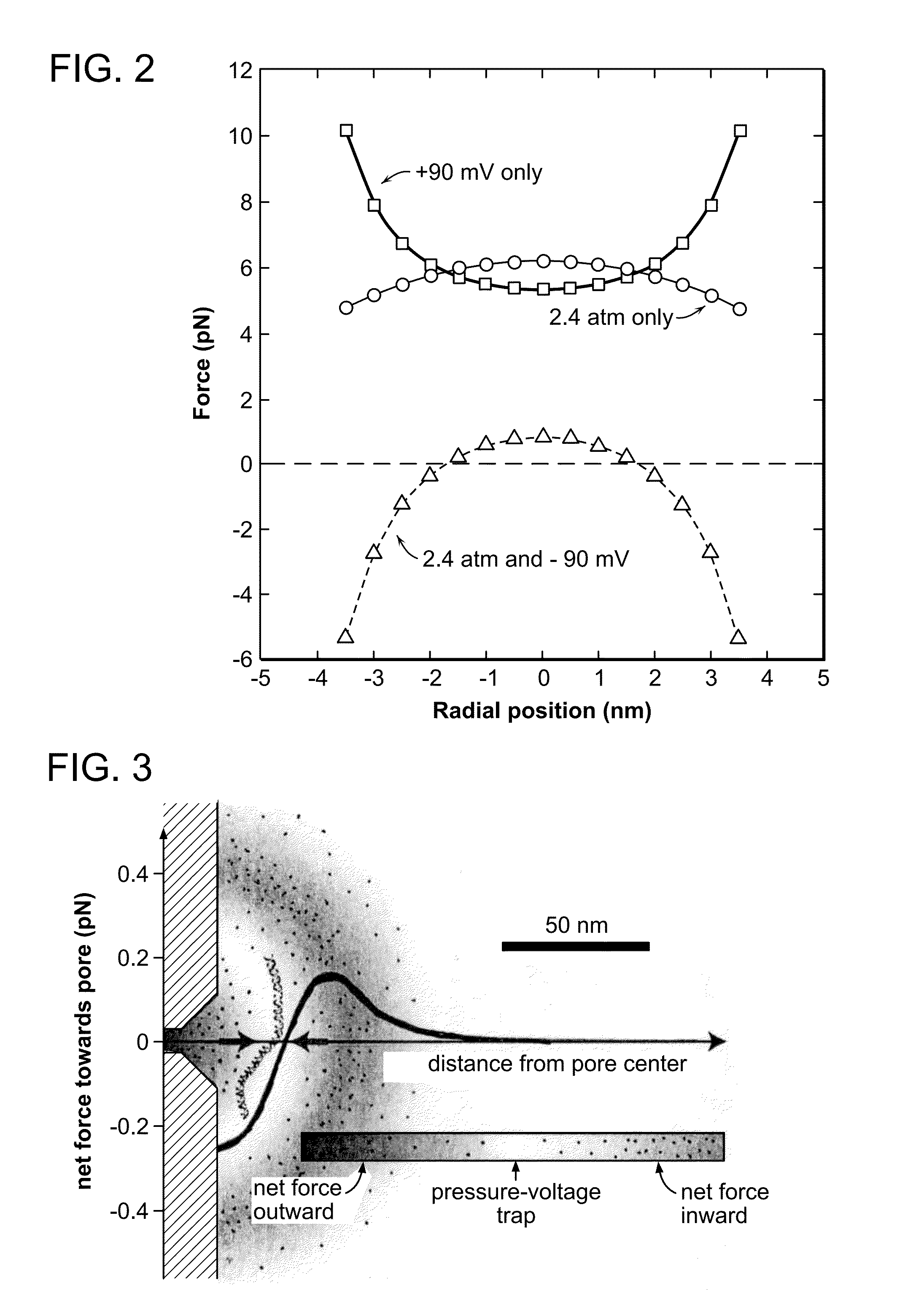Nanopore Control With Pressure and Voltage
a nanopore and voltage control technology, applied in the direction of fluid pressure measurement, liquid/fluent solid measurement, peptide measurement, etc., can solve the problem that the dna translocation speed through the nanopore is too fast to meet the bandwidth requirements for resolving individual nucleotides, and the identity cannot be resolved
- Summary
- Abstract
- Description
- Claims
- Application Information
AI Technical Summary
Benefits of technology
Problems solved by technology
Method used
Image
Examples
example i
[0102]This example describes an experimental comparison between a nanopore system employing a conventional voltage bias-based electrophoretic nanopore translocation force and a nanopore system including pressure-based nanopore translocation force and opposing voltage bias force.
[0103]Nanopores were formed in silicon nitride membranes in the following manner. Thin films of 2 μm-thick wet thermal silicon oxide and 100 nm-thick LPCVD low-stress (silicon-rich) silicon nitride were deposited on 500 μm-thick thick P-doped Si wafers of 1-20 ohm-cm resistivity. Freestanding 20 μm-thick membranes were formed by anisotropic KOH (33%, 80° C.) etching of wafers in which the thin films had been removed in a photolithographically patterned region by reactive ion etching. A focused ion beam (Micrion 9500) was used to remove about 1.5 μm of silicon oxide in a 1 μm square area in the center of the freestanding membrane. A subsequent timed buffered oxide etch (BOE) removed about 600 nm of the remain...
example ii
[0111]This example demonstrates experimental processing of dsDNA molecules with a nanopore from Example 1, controlled by both external pressure and voltage, to resolve a mixture of dsDNA molecules of different lengths.
[0112]One of the advantages of slowing nanopore translocation with pressure in the presence of a high opposing electric field is the ability to detect and resolve the lengths of very short molecules. Conventionally, when controlling nanopore translocation with only a voltage bias, the difficulty of resolving short molecule lengths comes from the poor signal to noise connected with the high bandwidth needed to resolve short blockage signals.
[0113]A nanopore fabricated as in Example I was configured with a cis reservoir including 615 bp dsDNA molecules. Translocation through the nanopore was controlled with an external pressure ΔP=2.44 atm and a voltage bias V=−100 mV. The nanopore conductance was 60 nS and the rms noise level was 11.9 pA at V=−100 mV. In FIG. 10A there ...
example iii
[0116]This example describes an experimental determination of the electrical charge of DNA molecules in different electrolytic solutions having a pH ranging between pH 4 and pH 10 in a 1.6 M KCl solution.
[0117]Eight different nanopores having a diameter of between about 8 nm and about 10 nm were fabricated as in Example I. Each was separately configured with a flow cell having a cis reservoir including an electrolytic solution of 1.6M KCl, with 10 mM Tris and 1 mM EDTA with dsDNA.
[0118]The experiments described above for obtaining a pressure-voltage force balance were conducted. In this process, an initial external pressure of about 1˜2 atm was applied. A very large counter applied voltage bias of about −600 mV was initially applied to prevent pressure-driven DNA molecule translocation. Then the voltage bias magnitude was slowly reduced. For each of the experiments, the pressure-voltage force balance point was typically at a counter voltage drop of between 300˜100 mV for the applied...
PUM
| Property | Measurement | Unit |
|---|---|---|
| length | aaaaa | aaaaa |
| length | aaaaa | aaaaa |
| diameter | aaaaa | aaaaa |
Abstract
Description
Claims
Application Information
 Login to View More
Login to View More - R&D
- Intellectual Property
- Life Sciences
- Materials
- Tech Scout
- Unparalleled Data Quality
- Higher Quality Content
- 60% Fewer Hallucinations
Browse by: Latest US Patents, China's latest patents, Technical Efficacy Thesaurus, Application Domain, Technology Topic, Popular Technical Reports.
© 2025 PatSnap. All rights reserved.Legal|Privacy policy|Modern Slavery Act Transparency Statement|Sitemap|About US| Contact US: help@patsnap.com



